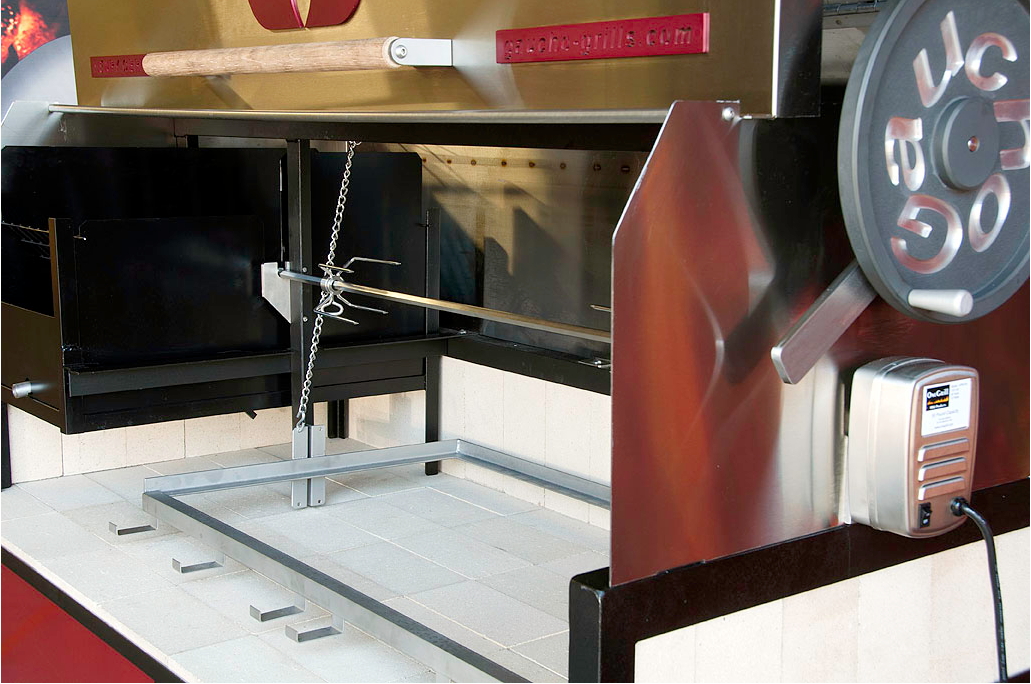Cleaning and Maintaining Your Argentine Grill
We’re writing this on a morning where our part of the country saw its first snowfall of the season. But we’re still an Argentine grill company, and our minds are on grilling.
More to the point, we’re thinking about how to clean one of our grills. Whether you’re a die-hard barbecue enthusiast who grills year-round, or someone who’s been avoiding an off-season clean, where’s what you need to know about maintaining your Argentine grill.
We’re writing this on a morning where our part of the country saw its first snowfall of the season. But we’re still an Argentine grill company, and our minds are on grilling.
More to the point, we’re thinking about how to clean one of our grills. Whether you’re a die-hard barbecue enthusiast who grills year-round, or someone who’s been avoiding an off-season clean, here’s what you need to know about maintaining your Argentine grill.
Start your clean by removing each of the grill’s detachable parts and letting them soak in warm, soapy water. Let them soak for at least 20 minutes.
Use a wire brush to clean most of the pieces. In the case of the grate, run the brush in the same directions as the bars on the grate.
Make sure you’ve removed soap residue from the grill pieces by heating up the grill and letting it sit for 15 minutes. Anything you didn’t rinse away will soon burn off.
If you have food residue on your grill’s grates and can’t get rid of it with regular scrubbing, try this trick:
Mix two cups of vinegar with a cup of baking soda, and pour that mixture into a garbage bag.
Put the grates inside the bag, and seal it with a rubber band.
Let the grates soak inside the bag overnight.
Once they’ve soaked in the vinegar/baking soda mixture, remove the grates and rinse them. Any remaining residue should fall away, or come off with some light scrubbing.
Pat the grates dry and they’ll be ready for use once again.
If you plan on cooking through the winter, here are a few tips for cleaning your Argentine grill after every cook:
Clean the grate with a paper towel dipped in canola oil, a step that will prevent rust as well as giving your cooking surface the proper clean. Wipe in the same direction as the grate.
Your grill is easiest to clean when it’s still warm. This can make the canola-oil-on-a-paper-towel trick a bit difficult, so just hold the paper towel with a set of tongs.
Clean the exterior of the grill with a piece of fine-grade steel wool that’s been soaked in hot, soapy water. If you don’t have any steel wool, you can use a non-abrasive household sponge with soap and water.
And if you are planning on firing up your Argentine grill this winter, try this recipe for Argentine grilled flank steak with salsa criolla.
Argentine Grilled Flank Steak with Salsa Criolla
Ingredients:
4 ½ pounds of flank steak (the equivalent of three medium steaks), trimmed of excess fat
3 cloves of garlic, mashed into a paste, with a pinch of salt
1 tbsp. of black pepper
1 tbsp. of chili powder
2 tbsp. of chopped thyme
2 tsp. of brown sugar
1 ½ tbsp. and 2 tsp. of kosher salt
1 large diced tomato
Half a minced red bell pepper
½ cup of extra virgin olive oil
½ cup of white wine vinegar
Directions:
Combine 2/3 of the garlic, 1 tbsp. of thyme, 2 tsp. of black pepper, chili powder, brown sugar and 1 ½ tbsp. of salt.
Rub this spice mixture over the steaks. Cover and refrigerate them for four to 24 hours.
Make the salsa by combining the remaining garlic, 1 tbsp. of thyme, 2 tsp. of salt, 1 tsp. of black pepper, tomato, onion, red pepper oil and vinegar with two ounces of water in a one-quart container. Shake, and refrigerate until you’re ready to serve dinner.
Remove the steaks from the refrigerator. Let them get to room temperature before you grill them. Preheat the grill for five to 10 minutes.
Cook the steaks over a high heat for three to four minutes on each side. Let the steaks rest for five minutes before cutting them across the grain. Serve them with the salsa.
To learn more about our grills and our products, visit our website and read our blog to get Argentine grilling tips and other recipes. We’re confident you’ll find something you’ll enjoy.
Cleaning Your Argentine Grill for Spring
Spring and summer have been a long time coming here in the Bucks and Montgomery County region, and it’s finally the right time of year to use your Argentine inspired Gaucho Grill. It seems as if every burst of golden sunshine over the past few weeks has been followed by a cold winter chill the next morning.
But have faith, Bucks and Montgomery County grillers! Long, humid weekend days and crisp summer nights are practically right around the corner. And if you’re anything like the team at Gaucho Grills, where our grills are inspired by the Latin tradition of slowly cooking meat over coals or wood embers, that means outdoor grilling, cooking and conversation will be part of your weekend routine before long as well.
If you’re going to be grilling with any sort of regularity this season, however, it’s crucial to bear in mind that early preparation will be your most valuable sous-chef. Waiting until the day of the season’s first grill is an amateur’s mistake. Keeping your Argentine grill in top working order throughout the season will require a bit of cleaning and standard upkeep here and there along the way.
None of this maintenance work needs to be particularly difficult, mind you. Simply follow the tips and suggestions listed below, and your asado-style grilling affairs will be the talk of the neighborhood for months to come.
Consider a Preseason Clean
If you’re up to the task of a thorough, all-over clean before the grilling season gets underway, you’ll be doing yourself, your grill, and your guests a big favor. This is a process that will extend the life of your grill, and go a long way toward improving the taste of the food cooked upon it, since charred residue is one of the main culprits of less-than-stellar grilled meals.
First, remove all of your Argentine grill’s detachable pieces, and then give them the luxury of a long wash in warm, soapy water. You’ll want to use a wire brush for most pieces. (When cleaning the grate, take care to move the wire brush in the same direction as the grate’s bars.)
If any of the pieces are especially caked with last season’s residue, you’ll want to let them soak in warm water for at least 20 minutes before attacking them with a brush. Finally, because there will likely be indistinguishable bits of soap residue remaining on various pieces, pre-heat your grill and let it sit for about 15 minutes once your cleaning job is complete. Any soap residue you didn’t manage to fully soak off will burn away in that time.
Clean Your Gaucho Grill After Each Use
Regardless of the type of grill you’re using, regular maintenance is the only sure-fire way to make sure it isn’t eventually ruined by residue buildup and rust spots. In plain language, that means properly cleaning it after each and every use. That’s a rule, by the way, that goes double for your Gaucho Grill’s V-groove grates, where bacteria can very easily build up if the grates are left dirty for any length of time.
Here are a few insider tips for achieving a thoroughly clean Argentine grill after each and every cookout:
Dip a paper towel in canola oil, and use it to clean your grill’s grate. Aside from giving it a meticulous clean, this process will also help prevent rusting.
A grill that’s warm (but not hot) is the easiest sort of grill to clean. But if you plan on using the canola oil trick to clean your grates (after scraping them with a wire brush, of course), you won’t want to hold the paper towel in your hand and potentially burn your fingers. Instead, hold the paper towel with a set of tongs. Wipe in the direction of the grates, just as you would with a wire brush.
Fine-grade steel wool can be used to give the outside of your grill a wonderfully clean appearance. Just make sure it’s doused in hot soapy water before you begin. Don’t feel like making an extra trip to the store for steel wool? A standard non-abrasive kitchen sponge can also be used to clean your grill’s exterior. Again, make sure to first soak it in hot soapy water.
If your grill’s exterior is covered in the sort of buildup that a kitchen sponge can’t get rid of, try using a non-lint terry cloth rag and standard glass cleaner.
Never forget that specific cleaning instructions can often vary from grill to grill. We understand that no one likes to read the owner’s manual, but in this case, doing so could mean the difference between a grill that lasts a lifetime and one that conks out after just one season.
Finally, if you are using any sort of attachment, such as the rotisseries attachments for our Latin-inspired grills, ensure that these are thoroughly cleaned, scrubbed and stored in the off-season.
To learn more about Gaucho Grills, and for information about purchasing a Gaucho of your very own, spend some time on our website, at gaucho-grills.com.



